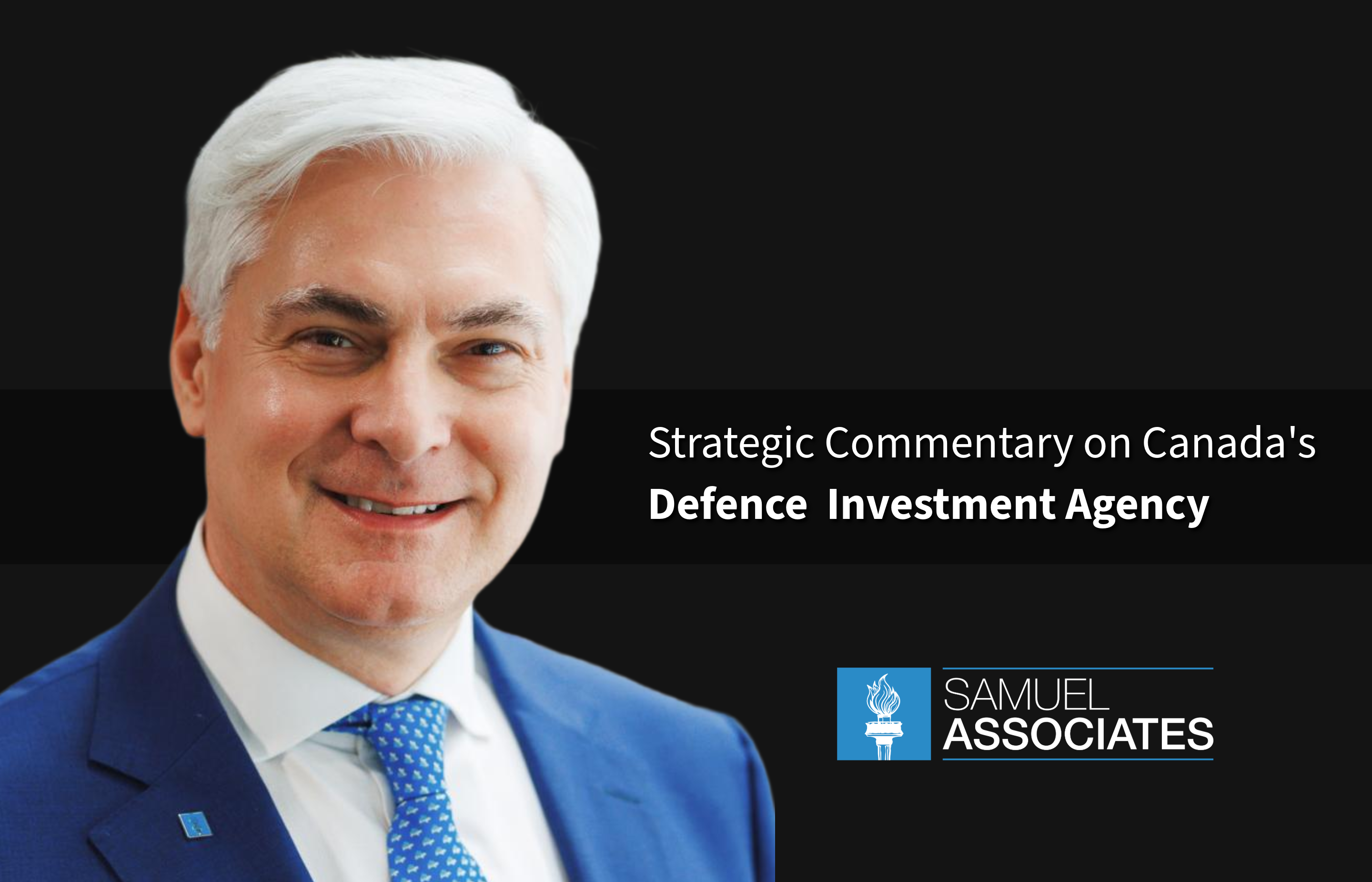Canada’s Dual-Use Horizon: Innovation, Institutions & Strategic Renewal


%4010x.png)
Digital Marketing & Communications Specialist
Samuel Associates Inc.
Canada finds itself at a moment of unusual possibility. The global security environment is in flux, driven by the rapid convergence of cyber capabilities, artificial intelligence, quantum science, and the increasingly porous boundary between civilian and military technology. This convergence is reshaping the character of power, the nature of statecraft, and the expectations placed on national institutions.
It is also testing Canada’s ability to adapt.
At the Engines of Growth conference in Toronto on November 20, 2025—an event bringing together security practitioners, innovators, policymakers, and international partners—the conversations were not merely about technology. They were, in essence, about Canada’s future posture in a world defined by speed, complexity, and strategic competition. Panels ranged from aviation cybersecurity to financial-sector resilience, from quantum disruption to live incident response. Yet running beneath the entire program was a deeper, unspoken tension: Canada has the talent and the ideas, but not yet the institutional machinery to turn innovation into strategic advantage.
This is not a new observation, but the stakes have changed. What was once an economic concern is now a matter of sovereignty.
The Convergence of Innovation & Security
One of the central themes emerging from the conference was the erosion of traditional boundaries in national security. The tools that define military effectiveness in the twenty-first century—advanced analytics, autonomous systems, encrypted communications, and quantum-safe architectures—are emerging not from defence laboratories, but from commercial and dual-use ecosystems. Start-ups, university labs, small technology firms, and multinational R&D teams are now the primary engines of capability development.
This shift has profound implications for Canada.
A nation’s strategic position is no longer determined solely by the size of its military budget, but by the agility of its innovation network and its ability to integrate new technologies into national defence and public safety systems.
Canada’s situation is paradoxical: it possesses one of the world’s strongest talent pools and an enviable research environment, yet the pathways from invention to adoption remain fragmented and slow.
The Institutional Gap
In reflecting on the discussions—particularly the Dual-Use Technologies panel with the Honourable Marco Mendicino—it became clear that Canada’s central challenge is not a lack of capability, but a lack of cohesion. The creation of the Defence Investment Agency (DIA) is a signal that Canada’s federal apparatus is beginning to recognize the need for a more strategic approach to defence innovation.
Yet two facts remain:
- DRDC (Defence Research and Development Canada) provides robust scientific capacity but is not structured for commercialization.
- The DIA can coordinate investment but cannot, on its own, bridge the gap between development and operational use.
What is missing is a connective institution—an entity focused on translation, adoption, and scale.In my remarks, I argued for the creation of the Office of Defence Innovation and Commercialization, a body designed to bring coherence to Canada’s defence innovation landscape.
The proposed Office would operate through a solutions-based framework. Instead of issuing rigid, requirements-driven tenders, this approach would prompt the Armed Forces to articulate the capability gaps they need solved and invite firms to propose and demonstrate viable solutions. Contracts – potentially in collaboration with private-sector finance – would be awarded to companies able to prove their concepts through prototypes or simulations. This model would open a much-needed pathway into the procurement system for small and medium-sized companies, giving Canada’s most innovative companies a fair opportunity to contribute to national capability development.
The ODIC would not replace existing institutions. Rather, it would do what they cannot: link disruptive technology creators with operational users, align regulatory and financial instruments, and support Canadian firms seeking entry into allied supply chains.
Institutions matter. They determine whether ideas become capabilities—or remain unrealized potential.
A World That Will Not Slow Down
Beyond institutional design lies the larger geopolitical context. Three global dynamics are shaping the environment in which Canada must make choices:
1. Technological acceleration
Innovation cycles now move faster than government decision-making structures. States that cannot absorb rapid change risk strategic dependence on those that can.
2. The shifting character of alliances
NATO’s next generation of capabilities—from quantum-resilient networks to integrated air and missile defence—will rely heavily on dual-use innovation. Compatibility, not just contribution, is becoming the benchmark for relevance.
3. The re-politicization of supply chains
Access to critical technologies, components, and intellectual property is increasingly governed by geopolitics rather than pure market logic. States without domestic capability or reliable allies face heightened vulnerability.
Canada is not insulated from these forces. It must decide whether it will shape its own strategic environment or adapt to one defined by others.
The Path Forward
What struck me most during the Toronto discussions was the willingness—across sectors—to rethink Canada’s strategic posture. There is a growing recognition that the future of national security is not solely the domain of defence experts, but of technologists, investors, regulators, and innovators whose work has implications far beyond their own industry.
Canada’s success will depend on its ability to:
- Build durable institutional bridges between civilian and defence innovation
- Move technologies from pilot projects to platforms
- Establish commercialization pathways that are globally competitive
- Leverage allied partnerships without losing domestic capacity
- Recognize that strategic influence is inseparable from innovation capability
All of this requires a new mindset: one that views innovation not only as a discrete economic issue, but as the foundation of national power.
A Moment That Matters
The Engines of Growth conference left me with a sense of measured optimism. The conversations were not theoretical exercises—they were practical debates about Canada’s place in a rapidly changing world.
Canada has the ingredients of success: research excellence, international partnerships, entrepreneurial ambition, and a strong industrial base. What remains is the task of building the architecture that can unite these strengths into a coherent strategy.
Modern statecraft demands institutions capable of keeping pace with innovation. If Canada embraces this imperative—through the DIA, DRDC, and a dedicated Office of Defence Innovation and Commercialization—it can secure a place not only as a consumer of global innovation, but as a contributor to the security and stability of its allies.
The world will not slow down. Canada cannot afford to either.
%4010x.png)
%4010x.png)




